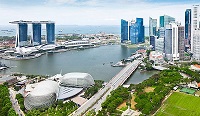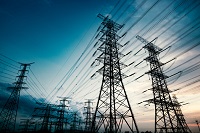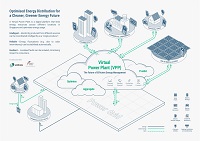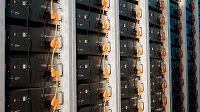Speeches
29 Oct 2025
Excellencies
Distinguished Guests
- Good afternoon and a warm welcome to the Singapore International Energy Week or SIEW. I am delighted to be join you for the 25th CEPSI, held in conjunction with SIEW.
- The global energy landscape is at an inflexion point. Global climate ambition appears to be wavering and the COP28 goal of tripling renewables by 2030 is daunting. Meanwhile, energy demand is expected to rise significantly in the coming decades fuelled by the rapid growth of Artificial Intelligence, data centres and the electrification of industries and transportation. Paradoxically, the raise in temperature around the world is also increasing demand for air-conditioning – a problem that Singapore also faces acutely.
- The International Energy Agency or IEA, projects that global electricity demand will increase by 25 percent by 2030. In Singapore, our electricity demand is projected to grow by 2 to 5 percent annually over the next decade.
- Herein lies the challenge. Data from the International Renewable Energy Agency or IRENA, shows that over 500 GW of new renewables capacity was installed globally in 2024. Yet, global consumption of fossil fuels continues to increase over the same period.
- These are complex challenges. As mentioned by Minister Tan earlier this morning, Singapore is focusing on three key priorities to future-proof our grid – resilience, flexibility, and interconnectivity.
- Allow me to elaborate.
- Our electricity grids face unprecedented challenges today. The integration of renewables and diverse energy sources bring variability and intermittency, adding significant complexity to how we operate and plan our grid. Distribution lines and substations may become congested locally, creating pockets of undersupply.
- Meanwhile, other areas may experience oversupply, particularly with increasing rooftop solar and distributed energy resources. Changing consumption patterns, such as electric vehicle adoption, compound these challenges. This creates a paradox: even when overall supply is sufficient, local imbalances impact reliability.
- Energy regulators worldwide are confronting similar realities. The grid must do more than ever before. As energy regulators, our role is to ensure grid reliability and resilience. We also oversee grid infrastructure planning, maintenance standards, and system security. To tackle the challenges we see today, we will need to future-proof our electricity system with innovative regulatory approaches and careful long-term planning. We will need to balance policy frameworks, technological innovation, and economic considerations to create resilience and flexibility to support the energy transition.
- Many jurisdictions use digitalisation and smart grid technologies to tackle congestion, variability and intermittency. Real-time monitoring, automated controls, and aggregation platforms for distributed energy resources help grid operators balance supply and demand more efficiently. This requires changes and new solutions to the way we plan and operate our grid and to build future capabilities.
- To this end, EMA has launched the Energy Grid 3.0 grant call to seek proposals enhancing grid planning and operations capabilities. We welcome industry partnerships with our ecosystem stakeholders to submit innovative solutions.
- Regulators globally are also evolving market frameworks to reward flexibility, revisiting approaches for participation in the electricity market, and rethinking electricity users as partners in the energy transition. Indeed, flexibility has become a cornerstone of modern grids. By flexibility, I mean it as the capability of generation and demand to adjust output or consumption in response to system conditions.
- Flexibility is also not just about how quickly we can ramp up a power generation plant, but it is also about how smartly we can orchestrate and optimise demand, storage and distributed energy resources to contribute to grid reliability and security. As jurisdictions incorporate more variable renewables, developing demand-side flexibility ensures reliable and efficient system operation.
- In Singapore, we are developing frameworks to allow distributed energy resources to provide demand response and grid services, to enhance system resilience. We have published the Demand-Side Flexibility Roadmap that lays out our vision to establish flexible demand-side resources as a key pillar of our power system, to serve as highly available, versatile, and bidirectional assets to balance demand and supply.
- It is often said: there is no transition without transmission. As we look to meet the region’s growing energy demand, there has been renewed impetus to turn the ASEAN Power Grid vision into reality. But for this to materialise, we will need to overcome significant challenges, particularly in terms of connecting renewable energy generation with demand centres across the region’s complex geography.
- Subsea power cables over long distances, which are essential for this interconnection, are still relatively new for the region. We must develop the regulatory, technical and financial frameworks to enable the transmission, deployment and maintenance of these cables. ASEAN is working to develop a regional Framework for subsea power cables, and endorsement of the Framework’s Terms of Reference earlier this month, has been a good first step. But there is still a lot of work to do.
- However, we do not need to reinvent the wheel. We can look at existing successes in other parts of the world. One such example is the Champlain Hudson Power Express or CHPE (pronounced CHIPPY) for short. The CHPE allows New York City in the US, to import 1.25 gigawatts (GW) of hydropower from Quebec, Canada. The interconnection comprises over one thousand kilometres of cable, with over half being submarine cables.
- One key takeaway from this project has been the way risk is allocated. CHPE has a twenty-five-year Power Purchase Agreement with the New York Power Authority. Under this, the New York Power Authority takes on the offtake risk while CHPE takes on some of the cable related risks.
- These learnings can be applied to transmission projects both overland and subsea. Finding ways to structure projects is crucial to supporting the feasibility of such interconnections.
- While we would like to do more for the power grids, we face a significant challenge: funding. According to the IEA, investments in electricity grids reached approximately USD 400 billion in 2024. This figure has to double by 2030 to support electrification and variable renewable generation.
- So, how do we develop more enabling policies to support grid modernisation and expansion? The investments are large, with huge upfront costs. Policy uncertainties and the long timeline to navigate regulatory labyrinth will increase risks and make projects unbankable.
- We will need to think out of the box for more innovative financing models for our power grids going forward. One example is the Accelerated Strategic Transmission Investment (ASTI) framework developed by Ofgem in the UK, to speed up the approval and funding process for projects. The framework is said to accelerate projects by up to two years, and will help to connect 50GW of offshore wind by 2030. IRENA’s regional efforts to match actual renewable projects with fundings from various stakeholders are also good references.
- As we continue to navigate these complex challenges, I believe these discussions and insights at CEPSI will generate new ideas and strengthen cooperation among the grid operators and suppliers across Asia. Together, I strongly believe that we can shape the region’s energy landscape for decades to come.
- I wish you a successful conference ahead. Thank you.
Harnessing Flexibility to Future-Proof our Grid
Strengthening Regional Interconnections
Ensuring Investment for Infrastructure Development
Conclusion















